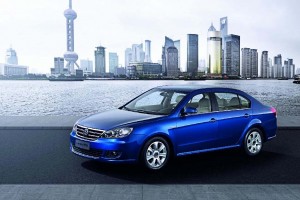
VW already has an established manufacturing base in first-tier Pacific Coast Chinese cities, such as Shanghai.
It’s a huge week for the Chinese auto industry with most of the headlines emerging from the biennial Beijing Motor Show – but at least one major story is coming from halfway around the world.
During a meeting at corporate headquarters in Wolfsburg, Germany, Volkswagen AG officials revealed to Chinese Premier Wen Jiabao and German Chancellor Dr. Angela Merkel plans for a major expansion in the automaker’s long-running partnership with China First Automobile Group. That includes a new plant in Urumqi, capital of the western province of Xinjiang.
That in itself is significant, supporting Chinese government efforts to spread the country’s economic boom and — in turn — create new markets for automakers like VW.
“A 30-year success story unites Volkswagen and China,” Volkswagen AG CEO Dr. Martin Winterkorn told the visiting officials. “As a pioneer of the Chinese automotive industry we gave important momentum to China’s industrial development and to German-Sino economic relations. Together with our partners we will now carry this pioneering spirit into Western China as well.”
VW is just one of many automakers announcing new factory plans. In recent days, an assortment of manufacturers have revealed plans to step up production to keep up with growing demand, including Ford, which plans to double its current capacity to 1.2 million units annually by mid-decade.
Despite a recent slowdown that most industry officials see as temporary, the Chinese industry is expected to maintain a growth rate of between 6% and 10% during the coming years and could reach 30 million annual sales by decade’s end, according to automotive leaders including Nissan CEO Carlos Ghosn.
As one of the first foreign manufacturers to enter the Chinese market, and long one of the region’s sales leaders, VW is struggling to keep ahead of its rivals – though it is now playing catch-up to another early entrant, General Motors. GM was the first maker to reach the 2.5 million annual sales mark in China last year and now hopes to reach 5 million shortly after mid-decade.
VW, meanwhile, urgently counts on China to generate the added sales that would be needed for its own 2018 goal of becoming the worldwide industry sales leader. It has promised to be producing and selling 10 million vehicles annually by then.
The People’s Republic is already the German maker’s largest national market, generating demand for 2.26 million of its products last year – and despite the recent industry slowdown, the maker saw its own sales surge 15.6% — 633,000 vehicles – during the first three months of the year.
As all foreign makers, it is required under law to pair up with a Chinese domestic maker and now has two separate joint ventures going – collectively employing 50,000 workers — including the original one with China First, also known as First Automobile Works, or FAW.
What’s particularly notable about the latest venture is not its size. At an investment of 170 million high-Euros, or $225 million, with a planned annual output of 50,000, it is modest, at best.
But it moves one of the engines of the Chinese economic boom – automotive manufacturing – to a region just beginning to feel the financial impact of that revolution. Chinese leaders have been urging automakers to expand beyond the primary region along the Pacific Coast and makers are beginning to embrace that call, if for no other reason than to hold down manufacturing costs.
As routinely happens when automotive manufacturing expands, workers in cities like Shanghai and Beijing have seen significant wage and benefit increases in recent years.
There are challenges, however. VW says it will work with suppliers to establish a base that can support the company’s planned Urumqi plant, due to open in 2015. And work will likely be needed to smoothly ship cars off the line.
As Henry Ford realized when he opened his Model T plant in the Detroit suburbs almost a century ago, relatively high-paying auto jobs help create their own market. And by boosting the fortunes of mid- and Western China, automakers are hoping to open up the third, fourth and fifth-tier cities that could provide the momentum for future growth even as demand in traffic-choked cities like Beijing begins to level off.
